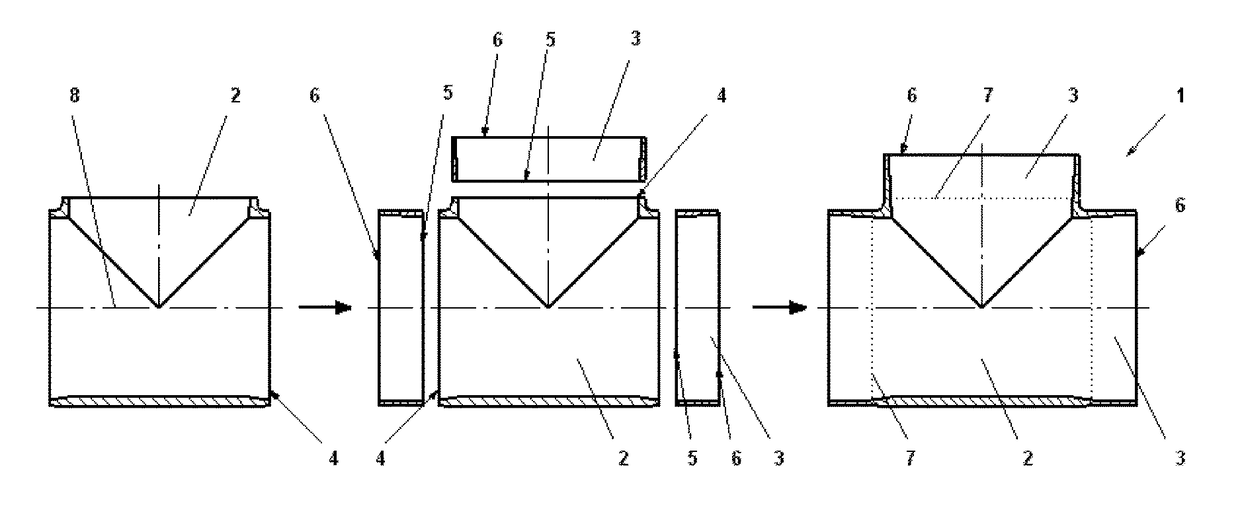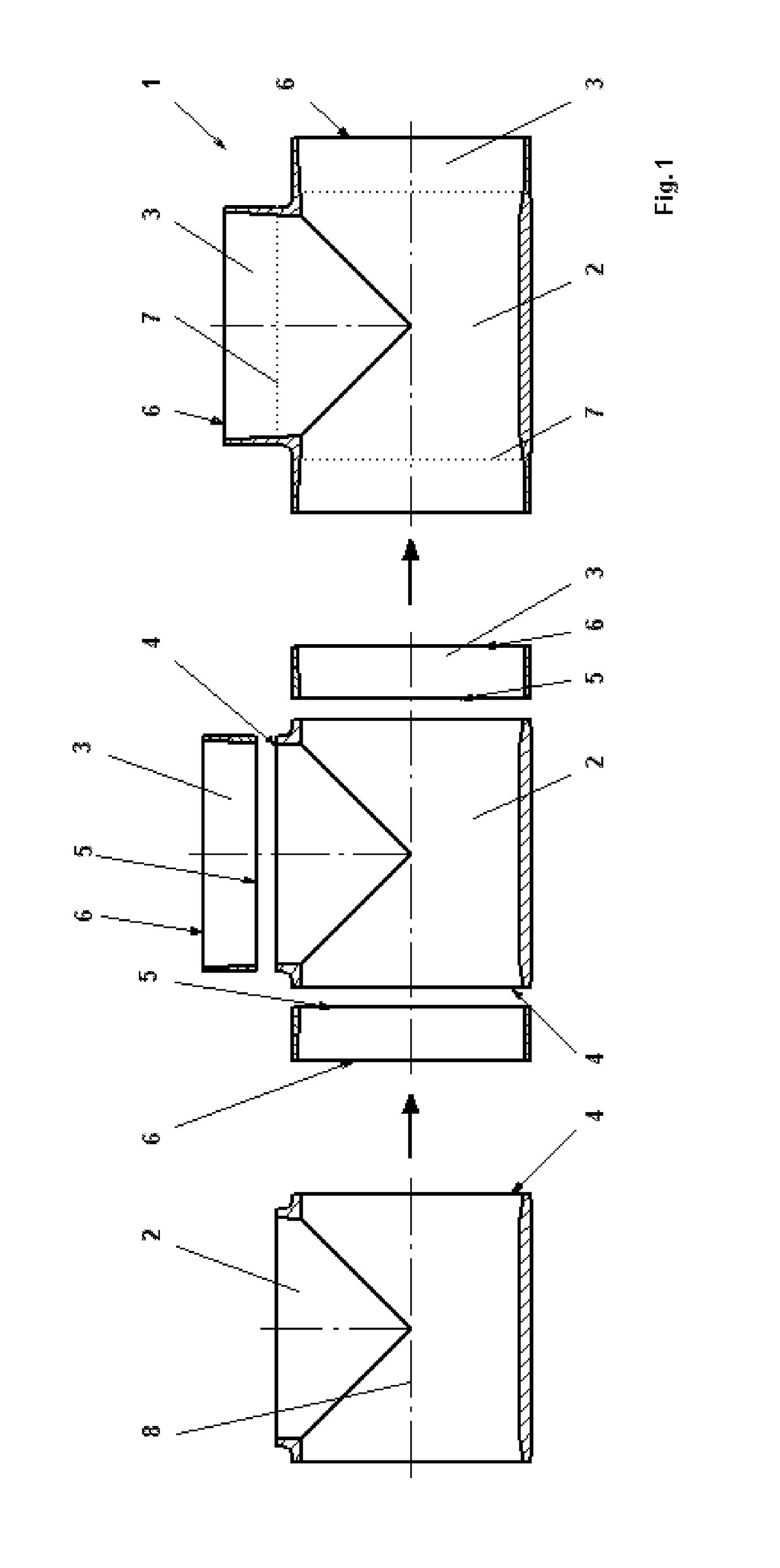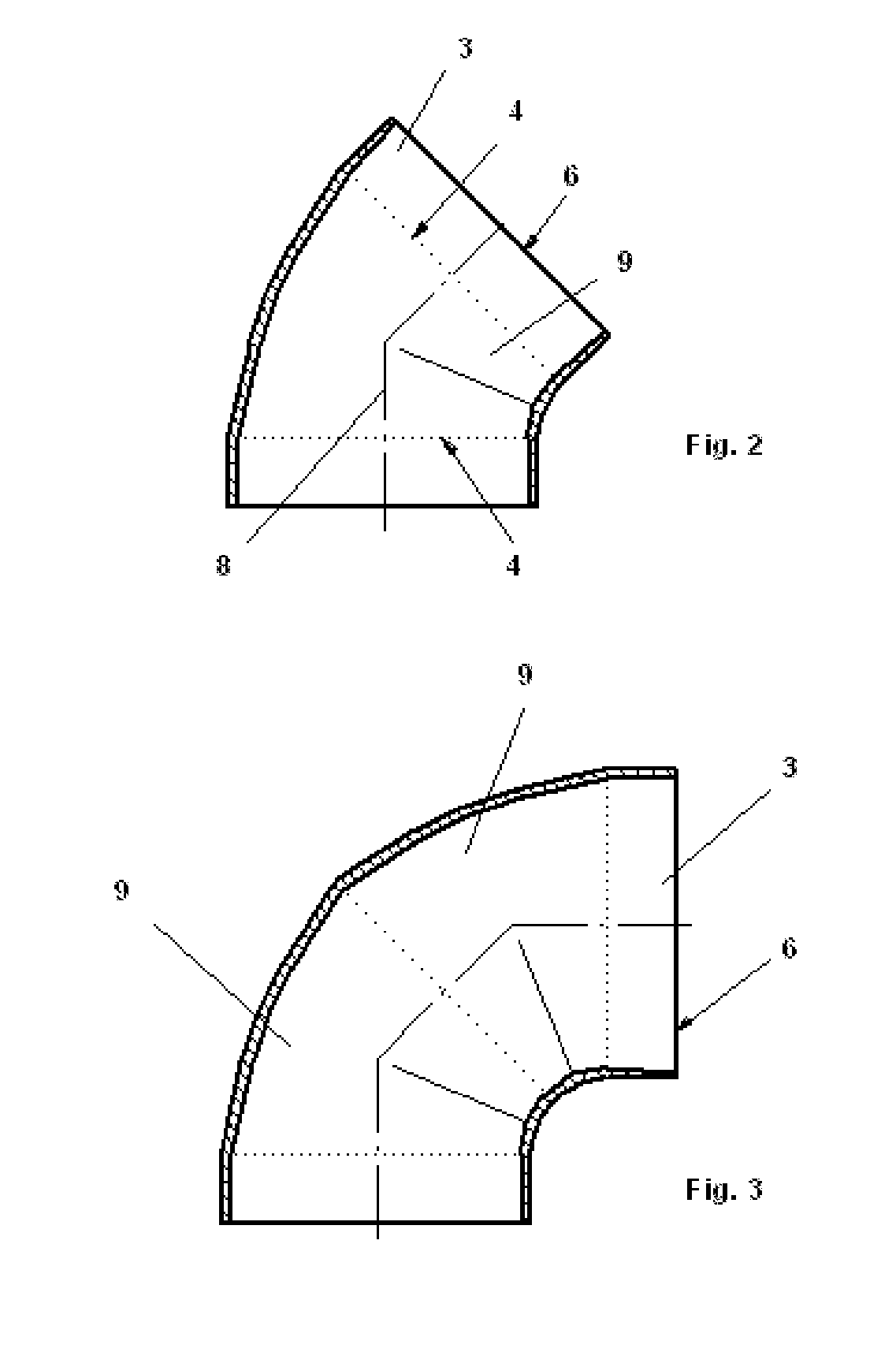Modular fitting
a module and fitting technology, applied in the field of fittings, can solve the problems of not enduring high pressure, rise to only small weld seams, and weld seams running longitudinally along the circumference, and achieve the effect of positive effect on the compressive strength of the fitting and/or of the weld seam
- Summary
- Abstract
- Description
- Claims
- Application Information
AI Technical Summary
Benefits of technology
Problems solved by technology
Method used
Image
Examples
Embodiment Construction
[0030]FIG. 1 shows the modularity of, and the steps for producing, a fitting according to the invention. The left-hand image illustrates a main element 2, which is T-shaped. The main element 2 is usually produced by injection molding, since the main element 2 forms a kind of basic block which withstands increased loading and to which differently designed connection elements 3 or further main elements 2 are welded. The central image illustrates, in addition, the connection elements 3 which can be welded to the main element 2. In the case of the embodiment illustrated, use is made of rectilinear connection elements 3. Of course, it is possible to join on any embodiment of connection element 2 with the corresponding diameter, for example a reducing connection element 10 or an instrument connection element 11, etc. The connection elements 3 are welded by way of their end surface 5, which is round and runs at right angles to the center axis 8, to the end surface 4 of the main element 2, ...
PUM
| Property | Measurement | Unit |
|---|---|---|
| diameter | aaaaa | aaaaa |
| internal diameter | aaaaa | aaaaa |
| internal diameters | aaaaa | aaaaa |
Abstract
Description
Claims
Application Information
 Login to View More
Login to View More - R&D
- Intellectual Property
- Life Sciences
- Materials
- Tech Scout
- Unparalleled Data Quality
- Higher Quality Content
- 60% Fewer Hallucinations
Browse by: Latest US Patents, China's latest patents, Technical Efficacy Thesaurus, Application Domain, Technology Topic, Popular Technical Reports.
© 2025 PatSnap. All rights reserved.Legal|Privacy policy|Modern Slavery Act Transparency Statement|Sitemap|About US| Contact US: help@patsnap.com



